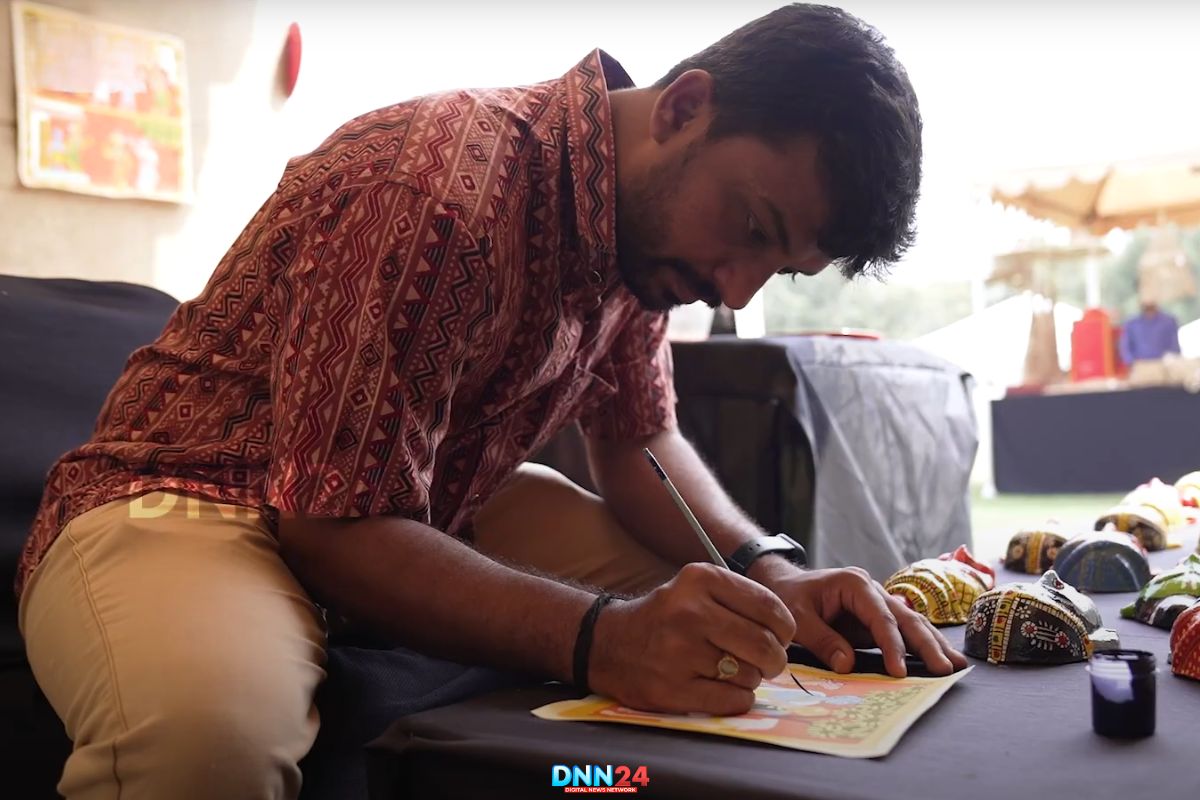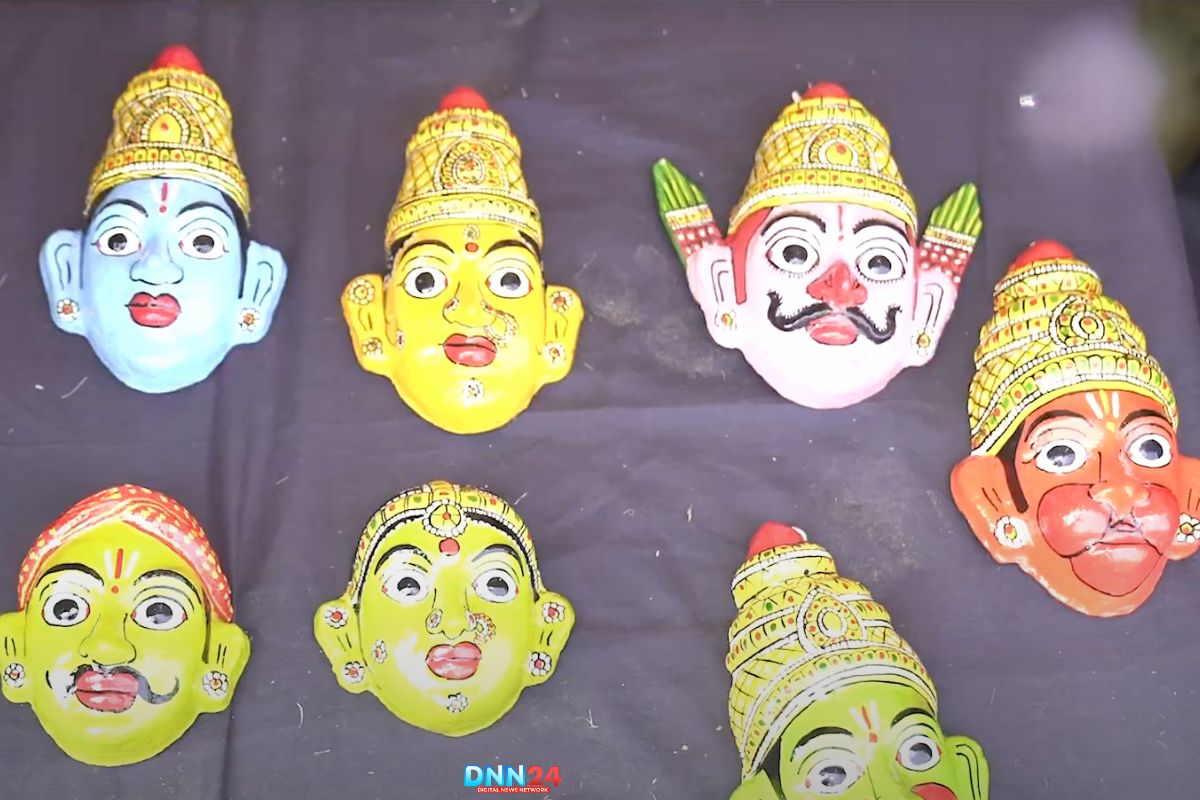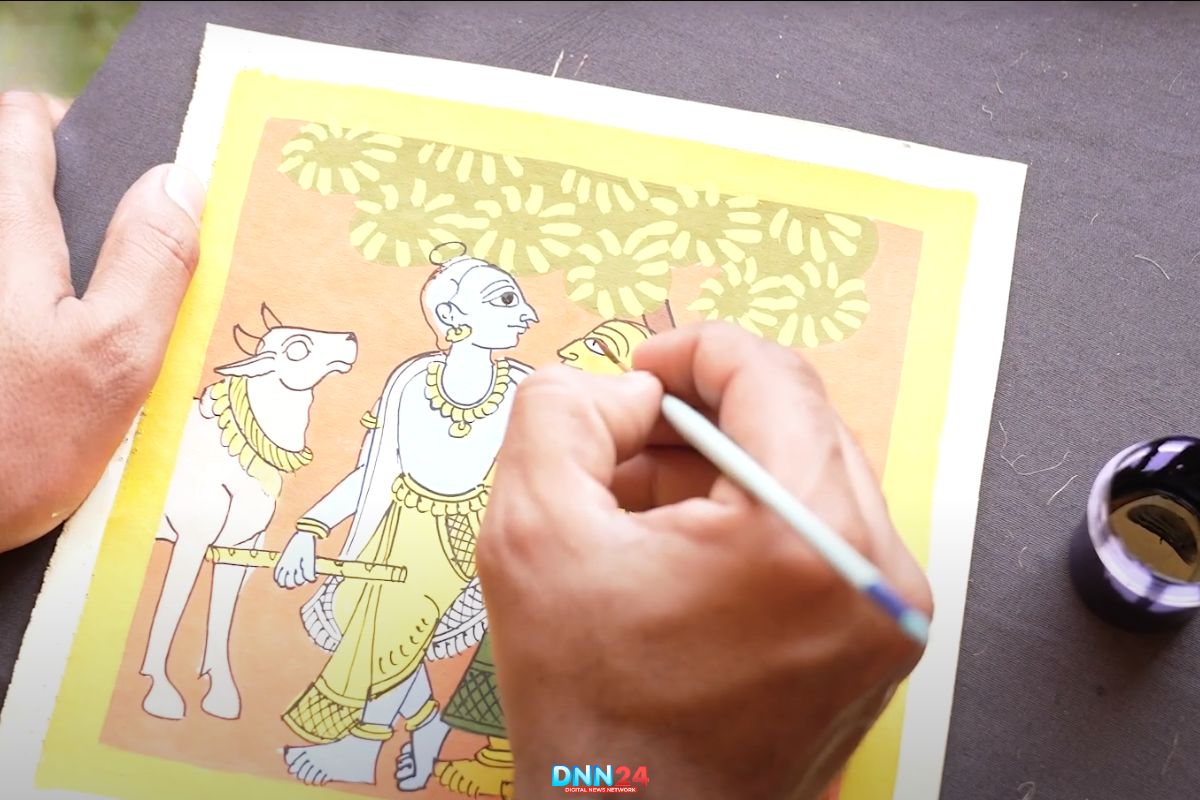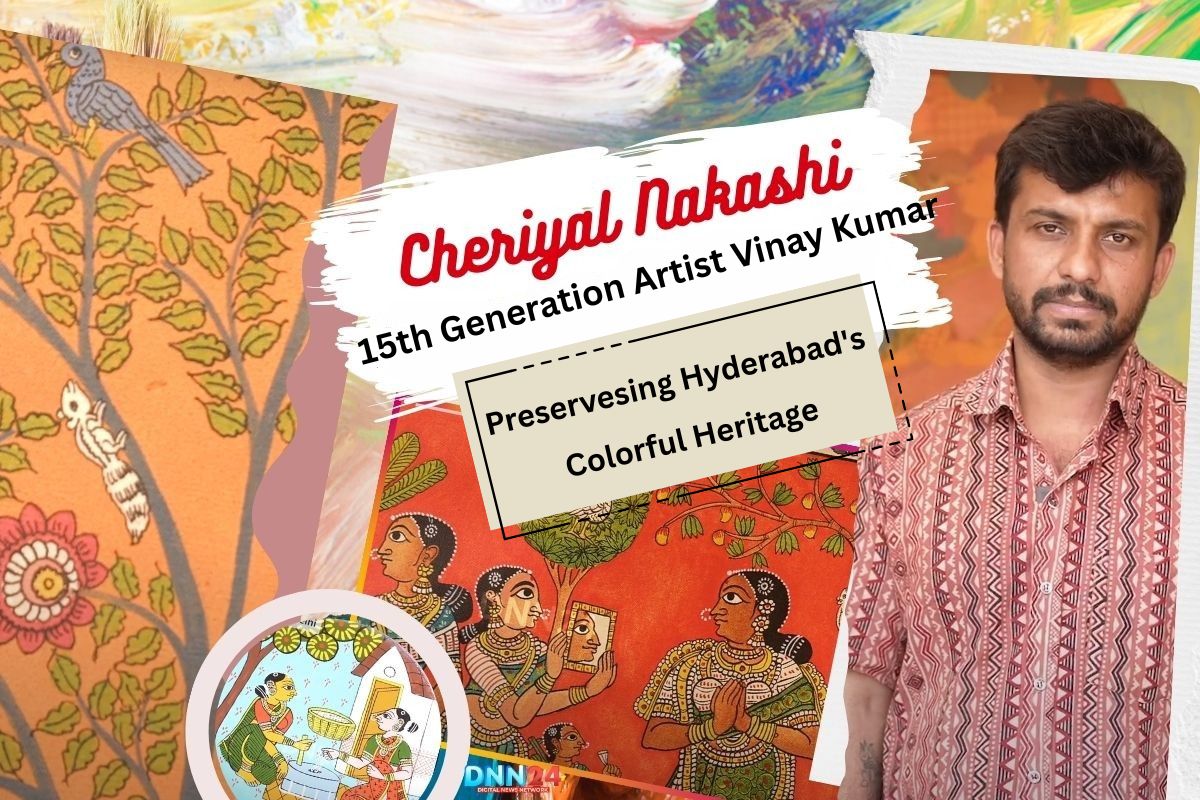Cheriyal Nakashi is one of India’s oldest and most beautiful traditional art forms. This vibrant painting style has become a cultural identity of Hyderabad that continues to thrive through generations of dedicated artist families. Originating from Cheriyal village, located about 90 kilometers from Hyderabad in Telangana state, this centuries-old art form tells colorful stories through detailed paintings. Vinay Kumar is among the few remaining artists preserving this precious heritage from the 13th century. This art form began during the Vijayanagar Dynasty when artists painted elaborate scenes from Ramayana, Krishna Leela, and Shiva Purana on temple walls and ceilings. The artistic tradition started as temple art and later evolved to other mediums.
According to Vinay Kumar, his ancestors migrated to Telangana during the 15th century, bringing this art form with them. Initially, these paintings decorated temple walls, but after the 15th century, artists began creating these detailed works on cloth. This transition marked a critical evolution in the Cheriyal Nakashi tradition, making the art more portable and accessible. The paintings served as visual aids for storytellers in the community who would narrate tales orally. These storytellers, known locally as “orally bolne wala,” would share traditional stories while displaying these colorful paintings to their audience, creating a unique cultural experience that combined visual and oral traditions.
Cheriyal Nakashi:The Family Legacy and Traditional Techniques
The preservation of Cheriyal Nakashi’s painting has been possible through dedicated families like Vinay Kumar, who have passed down their artistic knowledge through generations. Vinay proudly traces his artistic lineage through his grandfather, Venkat Ramaiah, who was crucial in reviving this traditional art form in the 19th century. Vinay’s father, Vaikuntham Nakash, a National Award-winning artist, continued this legacy and taught the techniques to Vinay, who is now teaching the next generation. The creation process of Cheriyal paintings is entirely natural and handmade, reflecting ancient techniques that have remained unchanged for centuries. Artists prepare their canvases using a special process. They start with regular khadi cloth and treat it with tamarind seeds, rice starch, and tree gum.

This treatment transforms the simple cloth into a suitable canvas for painting. The colors used are also natural pigments prepared by the artists using traditional methods. Vinay explains that these paintings were created exclusively on cloth in earlier times. Each painting tells a complete story through carefully arranged scenes and characters. The artists first imagine how to represent the story visually and then create sketches before applying vibrant natural colors. This meticulous process requires patience and skill from years of practice and learning under experienced masters. The distinctive style of Cheriyal paintings features bold outlines, vibrant colors, and detailed figures that bring mythological stories to life.
Cheriyal Nakashi:Modern Adaptations and Market Evolution
While staying true to the core traditions of Cheriyal painting, Vinay Kumar and other artists have adapted to changing times and market demands. They now create art in various mediums beyond the traditional canvas canvas. Wooden plates, masks, trays, and other decorative items are new canvases for this ancient art form. Vinay explains that this diversification is necessary to meet customer preferences in today’s market. He says, “The times are changing, and we artisans must also change.” However, he emphasizes that while they adopt modern designs and formats, they remain faithful to the traditional color application techniques and artistic principles that have defined Cheriyal paintings for centuries. This balance between tradition and innovation has helped keep the art form relevant and appealing to contemporary art lovers.

The pricing of Cheriyal paintings reflects both their artistic value and the labor-intensive process involved in creating them. Pieces start from ₹1,000 and can go up to ₹1 lakh, depending on the size and complexity of the work. Technology has also helped artists reach broader audiences. Vinay promotes his artwork through social media platforms like Instagram under the page “Cheriyal Paintings by Vaikuntham,” making this traditional art form accessible to global admirers. He also encourages people to search for Cheriyal paintings online to learn more about this unique art form. This adaptation to digital platforms has created new opportunities for traditional artists to showcase their work beyond local markets.
The Therapeutic Value of Traditional Art
Beyond its cultural and historical significance, Vinay Kumar highlights the therapeutic benefits of practicing and engaging with art forms like Cheriyal Nakashi. In today’s world, where many young people focus on software and IT careers, Vinay sees art as an essential medium for self-expression and stress relief. He explains that creating art helps relieve stress and allows artists to express their creativity through colors and designs. “Art itself relieves stress. By doing art, we can lose all the stress and express ourselves through colors,” says Vinay. This aspect of art as therapy adds another dimension to the value of preserving traditional art forms like Cheriyal Nakashi. The meditative process of painting detailed scenes using natural colors connects the artist with centuries of tradition while providing a calming effect in our often hectic modern lives.

Vinay believes engaging with art helps develop creativity and offers a meaningful alternative for technology-focused careers. He encourages more people to appreciate and participate in traditional art forms, not just for cultural preservation but also for personal well-being. The rich storytelling tradition embedded in Cheriyal paintings also allows viewers to connect with Indian mythology and folk tales in a visually engaging way. Each painting captures the essence of these stories through distinctive characters and scenes, making ancient narratives accessible to contemporary audiences and ensuring that these cultural stories continue to be shared across generations.
Cheriyal Nakashi:Preserving Cultural Heritage for Future Generations
As one of the few remaining practitioners of Cheriyal Nakashi, Vinay Kumar feels a deep responsibility to pass this art form to future generations. Despite modernization in almost every aspect of life, he remains committed to preserving the essence of this traditional art while making necessary adaptations to ensure its survival. Once central to community storytelling and religious expression, the art form now finds new relevance as decorative art and cultural heritage. Vinay’s approach combines respect for tradition with openness to innovation, allowing Cheriyal Nakashi to evolve without losing its cultural roots. Government recognition through national awards has helped raise awareness about this art form, but continuous efforts are needed to ensure its long-term survival.

Art enthusiasts and collectors play an essential role in supporting traditional artists by purchasing their work and spreading awareness. Educational institutions can also contribute by including traditional art forms in their curriculum and organizing workshops to introduce young people to these techniques. Cheriyal Nakashi represents an art form and a visual documentation of India’s rich mythology and cultural stories. Each painting preserves stories that might otherwise be forgotten in our digital age. By supporting artists like Vinay Kumar and appreciating the value of traditional arts, we contribute to safeguarding India’s diverse cultural heritage. These colorful narratives on cloth and wood connect us to our roots while beautifying our present and inspiring future generations to value the artistic traditions that have shaped our cultural identity.
Also Read: Dr. Jahangir Aslam Makhdoomi: Balancing Oncology and Art
You can connect with DNN24 on Facebook, Twitter, and Instagram and subscribe to our YouTube channel.

